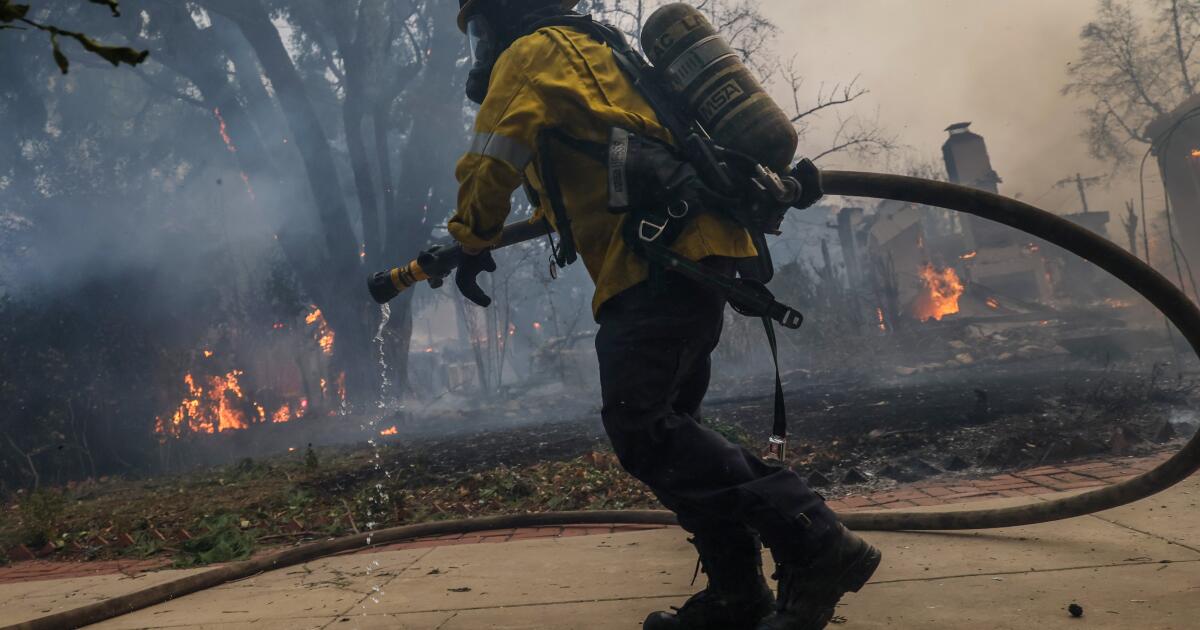Water Infrastructure Strains Under California Wildfires
As crews have fought the fast-spreading fires across the Los Angeles area, they have repeatedly been hampered by low water pressure and fire hydrants that have gone dry. These problems have exposed what experts say are vulnerabilities in city water supply systems not built for wildfires on this scale.
Infrastructure Limitations
The water system that supplies neighborhoods simply doesn’t have the capacity to deliver such large volumes of water over several hours, said Martin Adams, former general manager of the Los Angeles Department of Water and Power.
"The system has never been designed to fight a wildfire that then envelops a community," Adams said in an interview with The Times.
Pacific Palisades and Altadena
The limitations of local water systems complicated firefighting efforts in Pacific Palisades, where scores of fire hydrants were left with little or no water, and in Altadena and Pasadena, which are served by different utilities and where firefighters say they have grappled with low water pressure.
Firefighting Efforts
When a wildfire erupts, L.A. fire crews often turn to using aircraft to drop water and fire retardant. But while the flames were spreading rapidly on Tuesday and Wednesday, officials temporarily grounded water-dropping helicopters because of the extraordinarily strong Santa Ana winds, making crews more dependent on the limited water systems on the ground.
To help, city officials sent tanker trucks to supply water for crews in areas where supplies were limited.
Challenges and Contingency Plans
The firefighting efforts put the area’s water system under tremendous strain and "pushed the system to the extreme," with four times the usual water demand for 15 hours, said Janisse Quiñones, DWP’s chief executive and chief engineer.
She said the hydrants rely on three large water tanks with about 1 million gallons each. Hydrants functioned at lower elevations, but in hillier areas like the Palisades Highlands — where the storage tanks hold water that flows by gravity to communities below — they ran dry.
Expert Analysis
Water researchers said, however, that the infrastructure limitations are a common feature of many urban water systems.
"Local water systems are usually designed to fight local, small-scale fires over a limited time period," said Kathryn Sorensen, director of research at Arizona State University’s Kyl Center for Water Policy. "They are not generally designed to fight large, long-lasting wildfires."
Conclusion
The scale of the fires has surpassed previous L.A. fire disasters. The Palisades fire swelled rapidly and has destroyed more than 5,000 homes and other buildings, and the Eaton fire in Altadena and Pasadena has damaged or destroyed an additional 4,000-5,000 homes and other buildings.
The causes that sparked these and other fires are under investigation.
FAQs
Q: Why did the water hydrants run dry?
A: The hydrants relied on three large water tanks with about 1 million gallons each. Hydrants functioned at lower elevations, but in hillier areas like the Palisades Highlands, they ran dry.
Q: Can the water system be expanded to contend with larger wildfires?
A: Yes, but it would require significant investments in infrastructure and would likely be expensive.
Q: Why did the firefighters have to use tanker trucks to supply water?
A: The firefighters had to use tanker trucks because the water system was unable to meet the demand for water.
Q: Are there any plans to improve the water infrastructure?
A: Yes, there are plans to improve the water infrastructure, but it would require significant investments and would likely be expensive.


